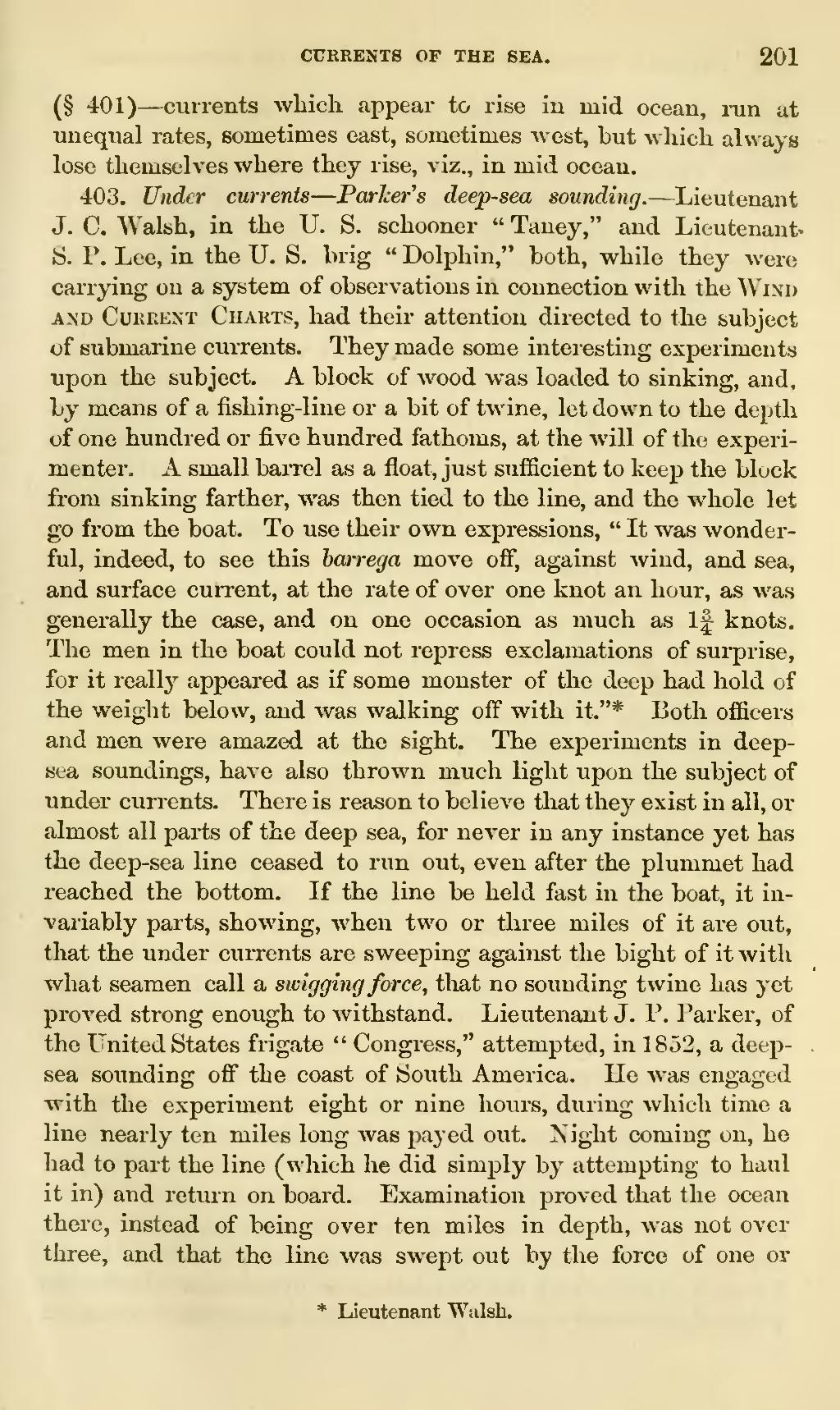(§ 401)—currents which appear to rise in mid ocean, run at unequal rates, sometimes east, sometimes west, but which always lose themselves where they rise, viz., in mid ocean.
403. Under currents—Parker's deep-sea sounding.—Lieutenant J. C. Walsh, in the U. S. schooner "Taney," and Lieutenant-S. P. Lee, in the U. S. brig " Dolphin," both, while they were carrying on a system of observations in connection with the Wind and Current Charts, had their attention directed to the subject of submarine currents. They made some interesting experiments upon the subject. A block of wood was loaded to sinking, and, by means of a fishing-line or a bit of twine, let down to the depth of one hundred or five hundred fathoms, at the will of the experimenter. A small barrel as a float, just sufficient to keep the block from sinking farther, was then tied to the line, and the whole let go from the boat. To use their own expressions, "It was wonderful, indeed, to see this barrega move off, against wind, and sea, and surface current, at the rate of over one knot an hour, as was generally the case, and on one occasion as much as 1¾ knots. The men in the boat could not repress exclamations of surprise, for it really appeared as if some monster of the deep had hold of the weight below, and was walking off with it."[1] Both officers and men were amazed at the sight. The experiments in deep-sea soundings, have also thrown much light upon the subject of under currents. There is reason to believe that they exist in all, or almost all parts of the deep sea, for never in any instance yet has the deep-sea line ceased to run out, even after the plummet had reached the bottom. If the line be held fast in the boat, it invariably parts, showing, when two or three miles of it are out, that the under currents are sweeping against the bight of it with what seamen call a swigging force, that no sounding twine has yet proved strong enough to withstand. Lieutenant J. P. Parker, of the United States frigate "Congress," attempted, in 1852, a deep-sea sounding off the coast of South America. He was engaged with the experiment eight or nine hours, during which time a line nearly ten miles long was payed out. Night coming on, he had to part the line (which he did simply by attempting to haul it in) and return on board. Examination proved that the ocean there, instead of being over ten miles in depth, was not over three, and that the line was swept out by the force of one or
- ↑ Lieutenant Walsh.
